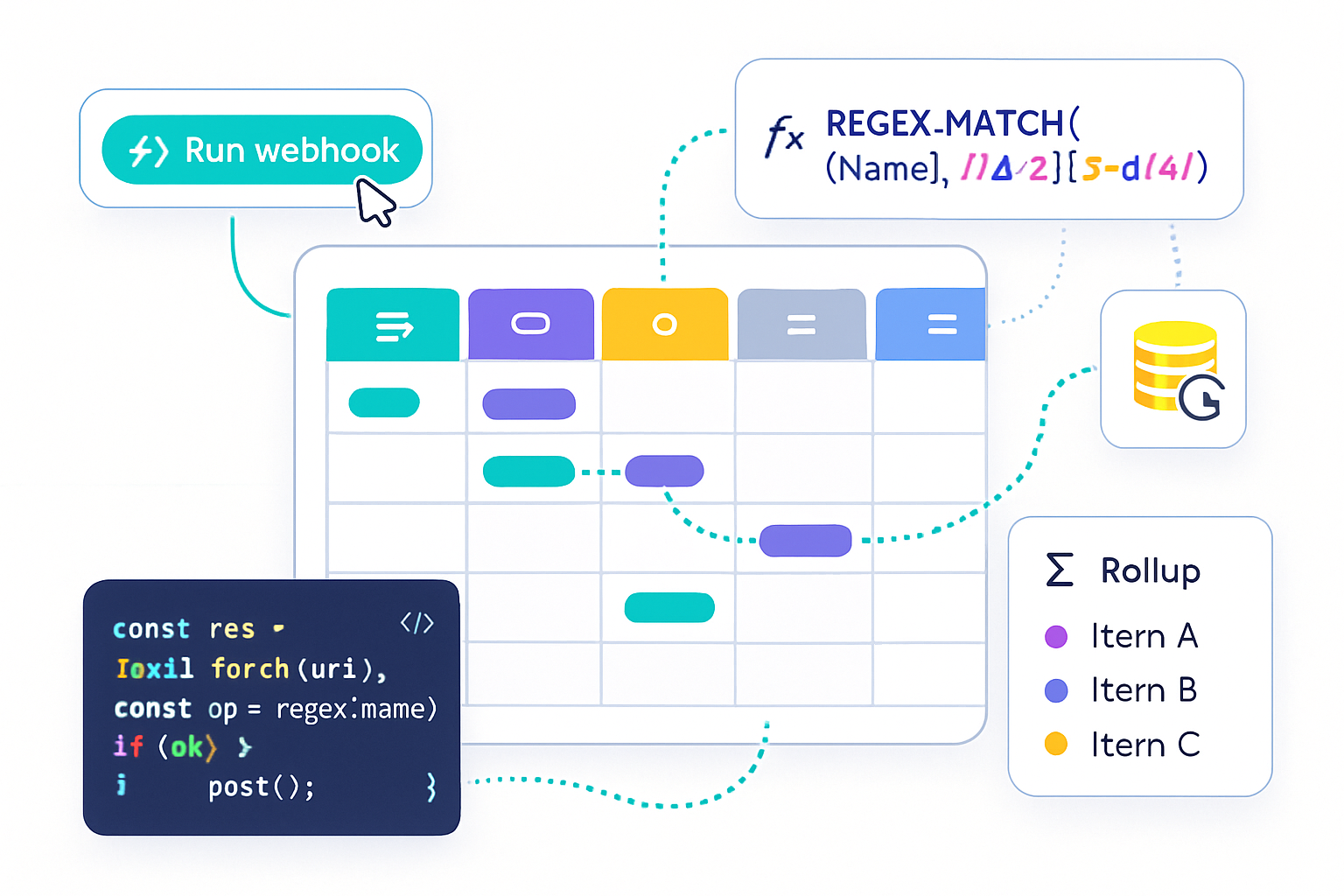· productivity · 5 min read
10 Zapier Hacks to Boost Your Productivity in 2024
Save hours each week by applying 10 lesser-known Zapier tricks - from batching notifications with Digest to using Storage as a lightweight state store, and calling any API via Webhooks. Practical, step-by-step hacks for beginners and power users.

Achieve more with less. In the next 10 minutes you’ll learn 10 Zapier hacks that cut noise, rescue hours, and scale your automation - without having to build a custom engineering pipeline. Read on to implement immediately, whether you’re just starting with Zaps or you’re designing enterprise workflows.
Why these hacks matter (fast)
Zapier saves time by automating repeatable tasks. But poorly designed Zaps can create task waste, missed data, and notification fatigue. These hacks help you: reduce unnecessary tasks, handle edge cases, batch noisy events, and extend Zapier to apps it doesn’t natively support. The result: cleaner automations and real time saved you can actually measure.
Hack 1 - Filter early: stop waste before it runs
Place a Filter or conditional before heavy steps (APIs, multi-step actions, or expensive apps). Every task Zapier executes counts toward your monthly allotment. So stop irrelevant triggers from ever reaching downstream steps.
- Where to apply - after the trigger, before multi-step actions or code.
- Example - a form tool that sends every draft -> use a Filter to only continue when
- Pro tip - combine Filters with
Learn more: https://zapier.com/apps/filter/help
Hack 2 - Formatter is a Swiss Army knife (use it liberally)
Formatter by Zapier can parse, reformat, and extract data (text, numbers, dates). Instead of adding external scripts, use Formatter to: normalize phone numbers, convert dates to ISO, split full names, or pull a value from a long string using Regex.
- Quick wins - convert timezones, extract domains from emails, turn CSV-style text into line items.
- Example - use
Docs: https://zapier.com/apps/formatter/help
Hack 3 - Code by Zapier: lightweight scripting inside Zaps
When Formatter isn’t enough, run a short JavaScript or Python snippet with Code by Zapier. Use it for custom data transformations, complex deduping, or merging arrays of items.
- Use cases - create a single
- Example (JS):
// InputData: {items: ["a","b","a"]}
const items = JSON.parse(inputData.items);
const unique = [...new Set(items)];
return { result: JSON.stringify(unique) };Docs: https://zapier.com/apps/code/help
Hack 4 - Webhooks (Custom Request) to talk to any API
Zapier’s Webhooks action is the bridge to apps that don’t have a Zapier integration, or to use endpoints with custom authentication and payloads.
- Do this to POST JSON to an API, call a REST endpoint, or trigger another Zap via webhook.
- Example cURL-style idea - POST order data to an internal endpoint with a bearer token.
POST https://api.example.com/orders
Headers: Authorization: Bearer <token>
Body (JSON): {"order_id": "{{id}}","total": {{total}}}- Pro tip - use Webhooks to call a “sub-Zap” so you can modularize large flows without duplicating logic.
Guide: https://zapier.com/blog/webhooks-guide/
Hack 5 - Storage by Zapier: keep simple state and counters
Need to remember a value between runs? Storage by Zapier is a tiny key-value store inside your account. Use it to track counters, store a last-processed ID, or implement simple locks to prevent concurrent runs.
- Use cases - limit notifications to the first 5 each day, dedupe repeated webhook calls, or store a timestamp of last sync.
- Pattern - Read a key at the start of the Zap, decide with a Filter/Code, then update the key at the end.
Docs: https://zapier.com/apps/storage/help
Hack 6 - Digest: batch noisy events into one notification
If every form submission, comment, or error creates an email or Slack message, you’ll drown in tasks. Use Digest by Zapier to collect items and send them as a single batch at scheduled intervals.
- Workflows - collect hourly support tickets and send one summary email; accumulate daily new leads and send a morning digest to sales.
- Tip - use the Digest’s “Append Entry and Schedule” action to control frequency and size.
Docs: https://zapier.com/apps/digest/help
Hack 7 - Paths and Multi-step Zaps: replace many Zaps with one smart Zap
Paths let a single Zap branch into different flows based on conditions. This reduces duplication and centralizes logic.
- Use case - route leads - if
- Efficiency - fewer triggers, simpler debugging, and consistent preprocessing.
Docs: https://zapier.com/apps/paths/help
Hack 8 - Zapier Tables and Transfers: lightweight databases and bulk moves
Zapier Tables provides a structured place to store rows of data, query them, and use them across Zaps - great for simple CRMs, inventories, or stateful lists. Transfers can move batches of records between apps without writing scripts.
- Use Tables for lookups (e.g., enrich lead records) and for joins between Zaps.
- Use Transfers for one-time migrations (CSV → Airtable → Sheets) or scheduled bulk syncs.
More: https://zapier.com/features/tables and https://zapier.com/features/transfers
Hack 9 - Email Parser: extract structured data from free-form emails
Zapier’s Email Parser (or inbox-based parsing) converts incoming email content into structured fields you can act on. This is perfect when an app only notifies you by email.
- Example - parse vendor invoices emailed to a mailbox, then create an expense row in Google Sheets.
- Setup tip - train the parser on several examples for reliability.
Get started: https://zapier.com/apps/email-parser/help
Hack 10 - Make debugging fast: use Zap History, Replays, and versioned testing
When a Zap misfires, the fastest way back to productivity is a solid debugging routine.
- Use Zap History to inspect inputs/outputs and the exact step that failed.
- Use the Replay feature to re-run a failed task after fixing (no need to recreate the trigger event).
- Maintain a test row or a sample dataset you can use repeatedly while refining mapping and filters.
Docs: https://zapier.com/help/automation/logs-replay
Quick checklist for implementation
- Add Filters as early as possible.
- Replace repeated transformations with Formatter or Code steps.
- Batch noisy events with Digest.
- Use Storage or Tables for stateful logic.
- When in doubt, call the API with Webhooks.
Further reading and references
- Zapier Formatter: https://zapier.com/apps/formatter/help
- Webhooks: https://zapier.com/blog/webhooks-guide/
- Code by Zapier: https://zapier.com/apps/code/help
- Paths: https://zapier.com/apps/paths/help
- Storage: https://zapier.com/apps/storage/help
- Digest: https://zapier.com/apps/digest/help
- Email Parser: https://zapier.com/apps/email-parser/help
- Tables & Transfers: https://zapier.com/features/tables and https://zapier.com/features/transfers
- Zap History & Replay: https://zapier.com/help/automation/logs-replay
Apply one hack today. Save an hour this week. Automate smarter, not harder.



